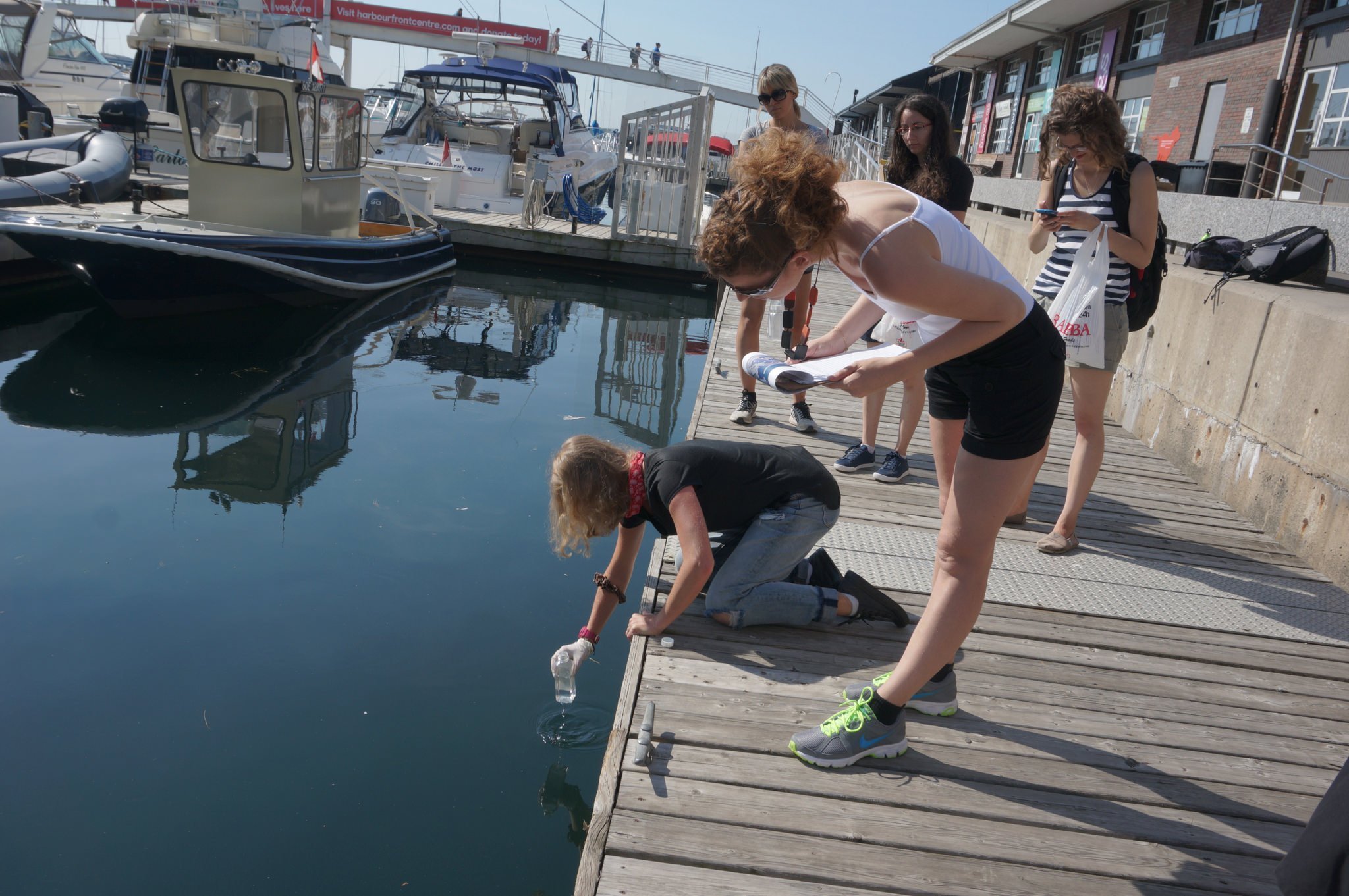The difference heavy rain can make in Toronto’s inner harbour
Boaters found along Toronto's inner harbour earlier today. (Photo by Li Black)
We know that rain can have an effect on water quality, especially with outdated infrastructure. This is particularly relevant to recreational water users and why we believe monitoring Toronto’s inner harbour is so important.
Support our effort to monitor Toronto’s inner harbour
As we are in the midst of our water sampling effort, we only have lab results from our first water sampling excursion. But after last night's heavy rain, we can draw some comparisons to provide perspective.
Knowing the standard for beach water quality in Ontario is 100 E.coli per 100 mL of water, for comparison, let’s look at Pier 4 (where one of the nine combined sewer overflows is located along Toronto's waterfront).
On Friday, July 15, 2016:
Toronto experienced a very light rain (1 mm). The previous day it also rained 6.6 mm. The lab results from the water samples collected from Pier 4 resulted in an E. coli count of 13,000.
On Thursday, July 21, 2016:
According to Canada’s archived data, Toronto had not received rain since July 15. While we wait to receive the lab results from this outing, here is what Pier 4 looked like that day.




Today – Monday, July 25, 2016:
In the last 24 hours, according to the TRCA’s Flood Monitoring and Real Time Gauging site, the Brickworks precipitation station recorded 12.2 mm. Dufferin Resevoir station recorded 20.8 mm. Tomorrow morning, we’ll be out collecting water samples from Pier 4 again. But just to give you a comparison, here are photos that were taken this afternoon.







After the storm, today was another hot day. Boaters and paddlers took to the inner harbour again, but they didn’t know if the water they were surrounded by was safe to touch. So let's prioritize the health of paddlers, boaters, swimmers, surfers, anglers, and divers by giving rec water users the information they need to enjoy their lake.

